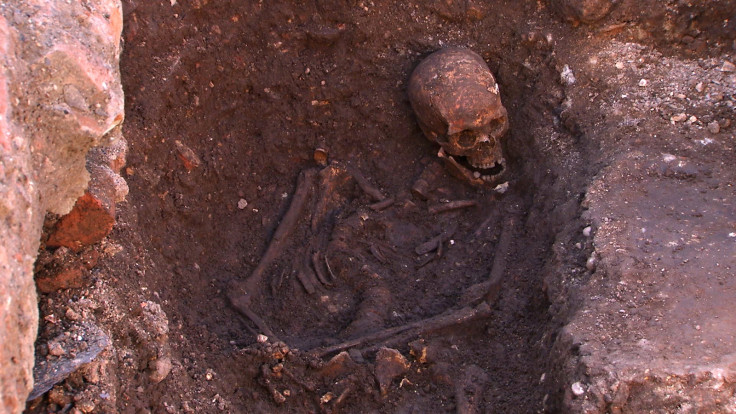King Richard III bones: Experts 99.999% sure lost monarch identified with blond hair and blue eyes

Scientists are 99.999% sure that the bones unearthed in a car park in Leicester are that of King Richard III – laying to rest a 529-year-old cold case.
Researchers at the University of Leicester have said that all the evidence points to the bones being that of the fallen king, and that new research has given an insight into his lineage and what he actually looked like.

Published in the journal Nature Communications, the scientists say King Richard III almost certainly had blue eyes and blond hair – at least in his childhood.
They also collected DNA from his living relatives to analyse genetic markers, included the mitochondrial genomes (inherited through the maternal line) and the Y-chromosomal markers (from the paternal line).
Study leader Turi King said: "Our paper covers all the genetic and genealogical analysis involved in the identification of the remains of Skeleton 1 from the Greyfriars site in Leicester and is the first to draw together all the strands of evidence to come to a conclusion about the identity of those remains. Even with our highly conservative analysis, the evidence is overwhelming that these are indeed the remains of King Richard III, thereby closing an over 500 year old missing person's case."
Kevin Schürer, who led the genealogical research for the project, said the maternal line provided the best insight into the skeleton's identity.
Although the Y-chromosomal markers differ, the mitochondrial genome shows a match between the skeleton and the maternal line relatives.
They said, this difference of the paternal line is unsurprising as the changes of a false-paternity event after over 500 years is high. The male descendants come from Henry Somerset, 5th Duke of Beaufort.
"The combination of evidence confirms the remains as those of Richard III," Schürer said. "Especially important is the triangulation of the maternal line descendants. The break in the Y-chromosome line is not overly surprising given the incidence of non-paternity, but does pose interesting speculative questions over succession as a result."
Simon Chaplin, Director of Culture ans Society at the Wellcome Trust, added: "It is exciting to have access to genetic data from any known historical individual, let alone a king of England lost for more than 500 years. Adding this information to a wealth of existing material about Richard III further highlights the ways in which studying human remains can inform our understanding of the past, and we look forward to learning more about Richard for many years to come."
© Copyright IBTimes 2024. All rights reserved.







